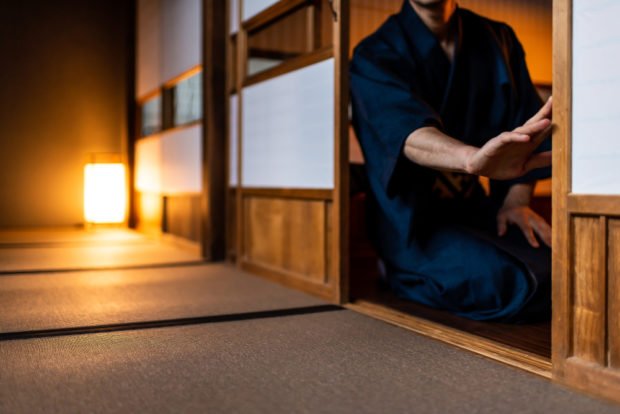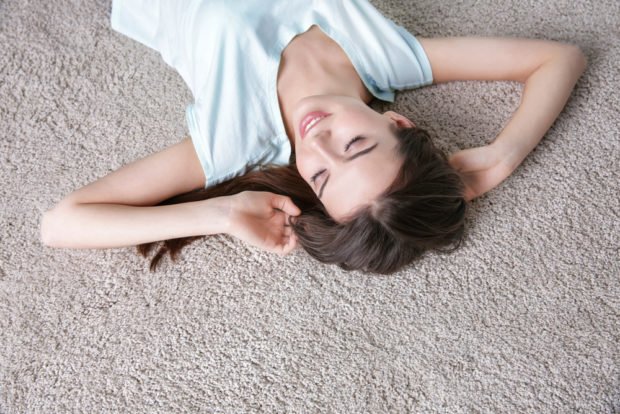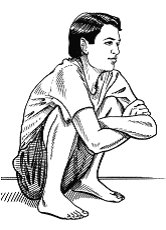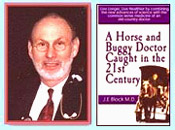-
Posts
4,326 -
Joined
-
Last visited
-
Days Won
57
Content Type
Profiles
Calendar
Forums
Posts posted by Premi5
-
-
https://www.businessinsider.com/bidets-better-than-using-just-toilet-paper-2019-9?r=US&IR=T
Toilet paper shortages keep happening. Here's why you should use a bidet instead.
- Bidets have been around for over 300 years — the first known bidet appeared in France in the 1700s.
- People all over the world use it as a standard in their bathrooms, but Americans haven't caught on.
- Investing in a bidet can significantly lower your spending on toilet paper.
- Using a bidet is cleaner than just using toilet paper and can lead to fewer instances of rashes, hemorrhoids, and UTIs.
Following is a transcript of the video.
Michelle Yan: If you were walking barefoot in a park or yard and stepped in dog poop, would you only use a couple of napkins to wipe it off? No. You'd probably wash it off with water. And it's for similar reasons that people worldwide use bidets to clean themselves after using the bathroom. In western Europe, South America, the Middle East, and Asia. They're cleaner and more environmentally friendly than just plain old toilet paper. But there's one place where bidets are not so welcome, which made us wonder: Why haven't they caught on in the US?
The word bidet actually means "pony" or "small horse" in French, since using a bidet is similar to straddling a pony. And it's in France that the first known bidet appeared, in the 1700s. But using water for cleansing had been around long before that. The Middle East, South Asia, and other regions had been using small vessels of water — called lotas or tabo — for cleansing for centuries before bidets appeared.
People would scoop the water with their hands to wash themselves off. At first, it was mostly for the upper class, but by the 19th century, indoor plumbing led to the bidets we have today. You might describe it as a really low sink next to the toilet. Its popularity spread from France to all across Europe and other parts of the world, except for America.
Part of the reason is that bidets got a bad reputation. Americans first saw them in World War II in European brothels, so, many associated them with sex work. By the time Arnold Cohen tried to introduce them to America in the 1960s, it was too late. He couldn't seem to defeat the stigma, and he quickly discovered that no one really wanted "to hear about Tushy Washing 101."
In the meantime, Japan was taking bidets to the next level. Toto, a Japanese company, made some of its bidets electric. So, why hasn't America embraced the bidet? Well, bathrooms in the US aren't really built for bidets. There's no space or additional plumbing setup for bidet fixtures. But the biggest reason it hasn't caught on comes down to habit. Most Americans grew up using toilet paper. And many might not even know there's an alternative way to stay clean.
But using a bidet actually makes a huge difference. For one, it's more environmentally friendly. The bidet uses only one-eighth of a gallon of water, while it takes about 37 gallons of water to make a single roll of toilet paper. Americans spend $40 to $70 a year on average for toilet paper and use approximately 34 million rolls of toilet paper a day. Investing in a bidet seat or bidet attachment can lower your spending on toilet paper by 75% or more. You'll also be saving some of the 384 trees that are cut down to make a single person's lifetime toilet-paper supply.
By now, you might be wondering about wet wipes. Don't they do pretty much the same thing? Well, no. Constantly wiping can irritate the skin and give you rashes. And it can still leave residue, because you're really just smearing with paper. Not only that, but wet wipes are actually harmful to the ocean and can cause sewer damage.
But washing yourself with a bidet can help with cleanliness, which may lead to fewer instances of rashes, hemorrhoids, urinary tract infections, and other medical issues. And if you're worried about using toilet water to clean your back end, you shouldn't be. It's tap water. Just like the water from your sink.
So give the bidet a try. Maybe start off with a toilet-seat attachment. Because, in the end, it's just washing yourself without hopping into the shower!
1 -
On 12/15/2021 at 7:01 PM, dallysingh101 said:
This is a big thing. I'll try and talk about it soon.
@dallysingh101 - please find them, jee!
0 -
-
7 hours ago, GurjantGnostic said:
Amen to all that. I cop a lot of squats and sit that way to compensate for not having to do that when leaving a mess.
Do yourself a favor. Hold onto something and just squat. Support yourself all squatted down. Then take a moment to release your head entirely to Guru Ji. Relax everything. You might adjust your neck doing this but don't worry pop or not. And just relax a while. Then when you stand up do so smoothly, slowish, and don't get up all the way. While the blood is finding new places to go while in this alien posture you don't want to stand up all the way too fast.
Do this a few times a day. And in no time you're going to enjoy some serious health benefits. Increased flexibility, blood flow to your pelvic floor and postural muscles, your reproductive areas.
And stay out of chairs.
Sit good lotus, which we call Agura in japanese, which makes me wonder, or good seiza. Lined up well, and releasing, breathing, head all ready to get cut off.
Those of us that do this already know there is no going back to the western patterns of dysfunction.
Oh and all their shoes are high heeled <banned word filter activated>. Don't wear them.
Oh and all their beds are too soft. Plywood is more like it. Or like firm office carpet. Your skeletal structure cannot support itself on fluffy <banned word filter activated>.
And matresses are filthy. Hotel trips?
@GurjantGnosticwhat do you think about sitting on 'medicine ball' compared to chairs?
https://longevitylive.com/anti-aging/sleeping-floor-japanese/
Most people these days invest in finding the best, most comfortable mattress ever. Yet, simultaneously, a growing number of people are deciding to ditch the bed as we know it. In fact, they’re choosing to sleep on the floor. A glance at the Japanese will show you that the practice of sleeping on the floor is deeply rooted in ancestry. Furthermore, it also possesses quite a few health benefits.
So, who’s in the right here?
Should we all wave goodbye to beds as we know them, box springs, frames, and all?
Let’s find out together!
Tatami: A Word about Traditional Japanese Flooring
You can’t have traditional Japanese-style sleeping arrangements without the signature tatami flooring, so let’s start at the beginning.
Tatami is a floor mat made out of dried woven rush grass wrapped around and sewn into a rice straw core. Gentle, yet firm, they’ve been a part of the traditional Japanese homes for centuries now.
However, for the last 150 years or so, there’s been a steady decline in using traditional Japanese interiors. As you can imagine, tatami has given way to relatively “westernized” home designs. One of the main reasons being that tatami is far more challenging to clean than standard flooring.
That doesn’t mean that tatami is being forgotten, though.

It’s still an important part of heritage, culture and Japanese national identity. Moreover, it’s not uncommon to find one tatami-matted room in many homes. This is often done in an effort to not lose touch with their roots. Thus, a lot of families decided to keep this one Japanese-style room in their otherwise “westernized” homes.
And yes, you’ll find some Japanese people who still opt for sleeping on a futon placed on top of tatami mats. More on that later.
For now, I’d like you to remember that, unlike hardwood floors, tatami has a more natural give. This then makes sleeping on it very comfortable. Also, the futons we’re talking about here are nothing like those you may have had in your dorm room. Rather, they resemble thin mattresses that can be easily rolled up and stored in the closet when not in use.
Did you know that authentic tatami mats can have a soothing effect on you?
The grass used to make them lets out a natural fragrance that essentially works like aromatherapy. It’s particularly potent during rainy and humid days and it promotes relaxation and helps you sleep better. The mere smell of tatami can have nearly the same calming effect on you as taking a walk in the forest!
If you’re thinking of going fully Japanese-style and thinking of installing tatami mats, I figured I’d give you one more reason why that might be the best decision of your life. Everything from the look and feel to the actual smell of tatami makes it a welcome addition to any home, Japanese or otherwise.
Practicality or More: What Makes Sleeping Japanese-Style Awesome?
Unless you’ve visited Japan before, the idea of sleeping on the floor may sound strange. That said, it does have its perks.
Here are a few examples!
It’s Easier on the Wallet
There’s no arguing that beds can get pretty expensive. Regardless of whether or not you’re counting the basic stuff, like the pillows, bedding and blankets. Furthermore, the costs of buying a mattress, a frame, a headboard, and a box spring all add up.
Sleeping on the floor, however, requires a minimal initial investment – all you truly need is a quality futon, pillows, and a bedding set. That’s it – that’s all it takes to get your sleeping area ready for use.
It Promotes Space-Saving Living Arrangements
Sleeping Japanese-style can be the best decision you ever make because it saves a lot of space. Once the futon is folded up and stored away, your bedroom is no longer a bedroom. The area can then be utilized in plenty of different ways.
You see, Japanese houses are typically smaller than those you may see in Europe, let alone the United States. Rather than setting up a bedroom where the actual bed takes up the entire room, they opt to sleep on the floor. The “bed” is only there when you need it. Once the futon is put away during the day, they can use the room for other things.
It’s Easy To Create More Sleeping Space
Unless you happen to have a guest bedroom or two to spare, whenever you have friends sleeping over at your place, they’re doomed to sleep on the couch.
Well, not in Japan. Since a portion of available floor space and an extra futon (which, by the way, are relatively cheap and easy to store when folded) is all you need, it’s easy to create a sleeping space for any number of guests.
It Creates a Safer Environment
Although not all countries are affected by earthquakes to the same, often devastating degree, for Japanese people, earthquakes happen so often, that they’re pretty much regarded as a part of their daily life.The lack of bed frames, chairs, and tables do bring about a certain level of safety when it comes to sudden earthquakes. Why? There’s less furniture to block your way or get you in a possibly life-threatening situation. It may not be as apparent at first glance; however, sleeping directly on the floor can be a matter of safety, too.
Going Beyond Practicality: Are There Health Benefits of Sleeping on the Floor?
If you went on a camping trip before, you’re familiar with the idea of sleeping on the floor. The surroundings may be different, but the concept stays the same. No box springs, no bed frames, it’s just you, your sleeping bag, and the ground beneath you.
It wasn’t that bad, now, was it?
Plus, mattresses are relatively new concepts, anyway – our ancestors didn’t have them, and they still managed to sleep just fine. Nature had given us a way to rest well before comfy memory foam mattresses were ever a thing, and it’s called instinctive sleeping(1).
Say Goodbye to Back Pain
When it comes to the health benefits of sleeping on the floor, you’re certainly going to feel most of them in your back. Everything from pain to posture will start to improve slowly but surely. It’s one of the first effects most people will experience when they make the switch.

Eliminating back pain seems like a bold claim. After all, most mattresses available on the market promise to do the same. However, a lot of people do experience profound improvements in that aspect. This is because, without the “sinking” feel some beds provide, the relatively hard surface forces the body – back, neck, shoulders, and hips – in a straight line. As I’m sure you already know, proper spinal alignment is everything when it comes to treating (and preventing) aches and pains.
Natural Sleeping Posture
As a species, humans have been sleeping on the ground since day one. However, we’ve abandoned the concept in favor of plush, soft mattresses. We’ve forgotten that sleeping on the ground is the natural order of things.
We don’t give our bodies enough credit – they’re perfectly capable of handling sleeping on something other than a soft bed. And as many people who sleep on the floor will tell you, once all the extra cushioning is gone, the body has a chance to find its natural posture and alignment.
Again, our bodies adapt much faster than we think and will distribute the pressure in the best possible way, to ensure alignment and unobstructed blood flow throughout the body.
Rest and Energy Levels
Although most people pay very little attention to how they feel when they wake up, other than the occasional mental assessment of whether or not they’ll need an extra cup of coffee that day, and the reason behind it is that we’re taught to make the connection between how we feel after sleep and how much we sleep.
Well, sleeping on the floor may help you change that – by experience sleep quality at its best, and not having an overly comfortable bed to cloud your judgment, you’ll notice a significant improvement in your morning energy levels. You’ll feel more rested, and you’ll be ready to get up and start your day – simply because you won’t feel tempted to stay in bed for a little while longer.
What about Downsides?
There aren’t that many notable downsides to getting rid of bed frames and opting to sleep on the floor – if you’re a healthy individual, that is.
Although I consider this to be common sense, and I’m not sure it even counts as a legitimate downside, I’ll point it out anyway:
If there are medical reasons that require you to use a specialized mattress, let alone a hospital bed, sleeping on the floor should be the last thing on your mind. You need a specific mattress for a reason – don’t let that slip your mind.
Since that’s out of the way, let’s talk about the one actual downside that counts here – potential temperature-related issues. You’ve probably walked around your home barefoot, so you know how chilly areas without carpeting can get. Granted, it all depends on the type of flooring you have in your home – tile and concrete floors will be much colder than wood floors, for example, and not at all comfortable – so, that’s something you should factor in before you throw out your bed frame. Tatami is the ideal flooring option, but unless you live in a traditional Japanese home, chances are your house doesn’t have it installed.
Oh, and one more thing:
With nothing more than a futon as a buffer between you and the floor, you’re going to be much closer to all the dust and allergens that are hiding there, too. In short, if you fail to keep the area clean, you’ll create an unsanitary sleeping environment for yourself. There will be one that won’t look nearly as inviting and comfortable either. And although sleeping on the floor isn’t necessarily harmful, without regular cleaning and if there is poor indoor air quality, respiratory issues and allergies are a real possibility.
Final Thoughts
I don’t expect you to throw out your entire bed as soon as you’re done reading this. That wasn’t the point of this article, anyway.
Listen, sleeping on the floor might be something worth considering, whether right now or sometime in the future. If you do decide to make the transition, be sure to do it gradually.
Are you thinking of adding some tatami mats in your home? Did you get a chance to sleep on one, futon and all? Let us hear your experiences in the comments below!
2 -
Interesting that Covid vaccine only saves one death per 100,000 people compared to not vaccinated
https://www.statista.com/chart/25589/covid-19-infections-vaccinated-unvaccinated/
http://cdn.statcdn.com/Infographic/images/normal/25589.jpeg
 1
1 -
Bumping this again please
2 -
9 minutes ago, ipledgeblue said:
but you do know a lot of people have vitamin D deficiency these days?
Many years ago I went to my GP to complain about tiredness and fatigue, but they found nothin in my blood test.
Then I went again sometime before the pandemic, this time they looked out for vitamin D and found I had I was deficient. It seems healthcare has become aware of the effect of vitamin D deficiency becoming common in people.
To be honest, I haven't completely got my tiredness under control after taking vitamin D for a few years.
I know people who work in healthcare, and scientists are not really sure about the significance of Vitamin D levels.
Most people who feel 'tired', it's related to lifestyle factors, not usually any deficiency
But agree you should take average 1,000 units Vit D/daily.
2 -
1 hour ago, shastarSingh said:
Thanks for sharing the video!
What a great creature baaz is!
There's a katha from Giani Thakur Singh jee on Dasveen Patshahi (from Suraj Prakash I think) about when Guru Jee were travelling somewhere a few years before they ascended (around the time they met Baba Banda Singh Bahadur I think), and they passed/stayed with one Hindu Sadhu ('Dadu jee' I think) who invited Guru Jee for meal.
The Sadhu was a very strict vegetarian, and was worried about having to prepare/serve for meat Baaj jee - I cannot remember the outcome unfortunately!
It's here somewhere...
2 -
Just now, shastarSingh said:
Do you think the Singhs who fed the baaz during Guru ji's time were vegetarian?
They must have done jhatka or shikaar of some animal to feed the baaz?
Not necessarily. They could still be vegetarian and just do shikaar training.
0 -
17 hours ago, dallysingh101 said:
What do people make of this?
Fat people blaming something for their lifestyle choices of eating too much and doing no exercise...
I reduced my waist size recently by eating smaller portions, esp in evenings
2 -
On 12/28/2021 at 6:41 PM, Premi5 said:
'Honorary Fellow' at St Edmund Hall, Oxford
Given what we have seen in the media in the past 1-2 years, about students at many universities wanting to dissociate themselves from figures who have been involved with negative historical events, they might be very interested to know their great institution has 'honoured' someone like this...
https://www.seh.ox.ac.uk/people/salman-khurshid
Queen’s Lane, Oxford, OX1 4ARView on mapPhone:+44 (0)1865 279000 Email:lodge@seh.ox.ac.uk
Anyone think this is worth pursuing ?
0 -
1 hour ago, shastarSingh said:
Dear bro
My point is that Singhs during Guru Sahib's time must have been touching non veg food and feeding the baaz. Guru Sahib really loved his baaz and horses.
Personally as a vegetarian don't feel comfortable touching meat.
Agree probably needs someone who has high level of Shardha and kamaiye who could keep a Baaj and look after
 0
0 -
He forgot he was playing soccer rather than rugby
0 -
I think he wanted to get support from the UP farmers leader, but he is not getting involved in politics
I thought from when I first saw Rajewal he looked 'off'
He is 78! Maybe he has seen the example of old man Biden and got inspiration
wiki:
Balbir Singh Rajewal
From Wikipedia, the free encyclopediaJump to navigationJump to searchBalbir Singh Rajewal
Born August 20, 1943 (age 78)[1][2] Occupation Farmer Protestor and Politician Political party Sanyukt Samaj Morcha Movement 2020–2021 Indian farmers' protest Balbir Singh Rajewal (born 20 August 1943) is a farm union leader and politician. He is founder of Bharatiya Kisan Union (Rajewal) and the Chief Ministerial candidate of Sanyukt Samaj Morcha party for the 2022 Punjab Legislative Assembly election. Rajewal is known for his active participation in 2020 Farmers' protest.[3]
Contents
Early life[edit]
Rajewal was born on 20 August 1943. He started his career as a telegraphist in the post and telegraph department but in 1968 he resigned from his job.[4]
Farmer activist[edit]
In May 1972, Rajewal formed Punjab Khetibari Union with merger of 11 peasants group in Chandigarh.[5]
When in 1978, PKU transformed into Bharatiya Kisan Union, he was appointed as Secretary of the Union.[4] He is also credited with writing the Constitution of BKU. He also worked with Mahendra Singh Tikait and Sharad Anantrao Joshi. In 2009, he went on hunger strike and demanded relief for farmers under draught funds and then Government granted 800 crore rupees for the same.[4]
2020 Farmers Protest[edit]
Main article: 2020–2021 Indian farmers' protestIn 2020, Government of India passed three farm acts, along with other 31 Farmer Unions in Punjab,[6] he started protest against these laws in Punjab and then at Singhu Border near Delhi at Haryana.[7] He is also the member of Samyukt Kisan Morcha (SKM).
Politics[edit]
Rajewal has been close to various political parties in past, including Shiromani Akali Dal, Indian National Congress, and Aam Aadmi Party, but didn’t accept any official post.[8] During 2020-2021 Farmer's protest, he was against any political participation.[9]
0 -
https://www.toilet-related-ailments.com/testimonials-about-squatting.html
Testimonials on the health risks of sitting toilets and benefits of squatting by doctors, health experts and ordinary people

The best posture for passing stools is squatting. In this position, waste elimination is easier, faster and complete.
Sitting, on the other hand, obstructs the passage of waste through the colon. Elimination is difficult, requires straining and can never be complete.
Many people today remain unaware that sitting toilets pose a danger to their health and well-being.

Dr Denis Burkitt was the celebrated medical researcher who discovered the power of fiber when he studied traditional African societies 60 years ago. (Read about the life, work and legacy of Dr Denis Burkitt.) He made the observation that the squatting posture was at least as important as eating fiber for preventing [intestinal] diseases. The squatting posture keeps the bowel naturally clean, preventing the fecal stagnation that creates a breeding ground for infection and inflammation.
Dr Jerry E Block, MD, FACP
Board Certified Internist
Founder, Southeast Kansas Internal Medicine Associates
Author, A Horse and Buggy Doctor Caught in the 21st CenturyHaving reviewed all the scientific literature available on the squatting posture and having had some personal experience with this ancient, time-tested method for natural evacuation, I have no hesitation in recommending it to my patients. Alejandro Cardona, MD
General Practitioner
Department of Medicine
University of Valencia
Spain
Here in America and Europe we are so used to our Western way of using the toilet--sitting and waiting and straining. Well, it just so happens that the ancient method of squatting makes use of gravity to help Nature do Her job. So much of the world, in its apparently primitive style, is really way ahead of us in many ways, including even our elimination. Sitting is not as relaxing and effortless in this process -- squatting is far superior. Strain can lead to many disorders in this area of the physiology.
Let us be ready to answer Nature's call in the most natural way.
Donn Wiedershine, MD
Staten Island, NYTwenty-five years ago, when former President Carter had a hemorrhoid problem, Time Magazine called and asked me to explain the cause of hemorrhoids. In the magazine, I was quoted as saying, "Man was not meant to sit on a toilet, but to squat in a field." Michael I. Freilich, MD
Retired Surgeon
Marina del Rey, CA
Want to see a modern tragedy? Go look at your toilet seat. The worst thing for long-term health happens while sitting instead of squatting in the bathroom. Why do so many of us suffer from constipation, heartburn, low back pain, hernias, hemorrhoids, colon cancer, and overeating due to misabsorption of nutrients? The answer is our ridiculous insistence upon 'civility' on the toilet, which stagnates our natural 'sewer system'.
Steve Ilg
Author/World-Class Athlete/Yoga Teacher
I am thankful that there is actually such a simple solution to building health through proper and total elimination of waste. Since my 'sitting toilet' days, I am aware that my waste has not been fully eliminated. Serious hemorrhoids plagued my health after I delivered my eldest son Ryan. I believe if I had used the squatting posture for defecation, I wouldn't have this problem.
I would strongly encourage all who do not have squat toilets to seriously consider getting one, or to use a squatting platform.
Mrs Rebecca Ngui, Singapore
Full-time mom (pictured with second son Regan)
Squatting is the activity of daily life that Westerners (and regrettably, more and more Easterners) have given up at their peril. The use of toilets and chairs lead to myriad problems that plague modern society.
Ms Elizabeth Noble, PT
Founder, Section on Women's Health
American Physical Therapy Association
I will never go back to the "sitting-on-the-throne" routine.The squatting position is clearly superior.
Dr Craig Berg
ConsultantWhen I was helping out my father in the family construction business many years ago, I always advocated squatting toilets to our clients. The reason was purely practical - squatting toilets took up less space, and in those days, bathrooms were much smaller. Later, when I became a journalist, I once wrote an article on why people should take a stand to preserve our squatting toilets, and not simply adopt the Western habit (of sitting).
After all, our ancestors in their wisdom have been using squatting toilets for centuries... We should too!
Lee Chiu San
Singapore
I have written the book, Put Hemorrhoids And Constipation Behind You, which had a chapter describing our biological similarities to our ancestors of 3 million years ago. As such, we were designed to squat to eliminate.
Kenneth Yasny, PhD
President, Society for the Prevention of Colon DiseaseThe health benefits of this (squatting) position cannot be overstated. As a side benefit, the squatting position provides an excellent stretch for the low back and helps to stretch the ligaments and tendons of the ankles.
Richard Grossman, LAc, OMD, PhD
Licensed Acupuncturist, Doctor of Oriental Medicine
Santa Monica, CA
I have always been told that the proper way to eliminate is by squatting.
This is the reason why our ancestors did not develop the numerous diseases that plague our body (via the colon) today.
Dr Akilah El, ND PhD
Naturopathic Doctor
The worst threat to our health is our culture and the damaging behaviors and attitudes it teaches us. Fortunately, our bodies have the wisdom to know what is good for our health and what is bad. When you try squatting….you know it’s the right thing for your health.
Sydney Ross Singer and Soma Grismaijer
Medical Anthropologists
Authors of 5 books, including
Get It Out! (On the vital importance of elimination)
and Dressed To Kill: The Link Between Breast Cancer and Bras
Director of the Institute for the Study of Culturogenic Disease
Hilo, Hawaii
For years I have been teaching that structure affects function, in terms of the spine and the nervous system. The same rules apply to the colon.
Sitting puts the colon in an unnatural position and causes unnecessary stress on the whole digestive system.
Dr Joe Esposito, LD, DC
Diplomat American Board of Chiropractic Orthopedists
Diplomat American Academy of Pain Management
Author of "Eating Right...For the Health Of It!"
Director, Health Plus Chiropractic Center
Marietta, Georgia
We have been using that method (squatting) for expectant mothers for many years as yogis. Squatting for expectant mothers keeps the spine aligned and strong and the hips and pelvis balanced, as they open to prepare for birth.
Gurmukh Kaur Khalsa
Internationally Renowned Kundalini Yoga,
Meditation, Pre-Natal and Post-Natal Care Teacher
It is my sincere belief that one of the bowel's greatest enemies in civilized society is the ergonomic nightmare known as the toilet or john. Dr Bernard Jensen
Chiropractic Physician
Nutritionist
Author, Dr Jensen's Guide to Better Bowel Care: A Complete
Program for Tissue Cleansing Through Bowel Management2 -
Not just women, but males also
https://shirtlessbollywoodmen.blogspot.com/2020/01/indian-model-in-us-sukhdeep-mann.html
Indian Model in the US: Sukhdeep Mann
One of the hottest Indian male models based in the US - shot by Rick Day - Sukhdeep Mann. The hottest Punjabi model we've seen in ages.
Also, we've heard no updates on this hottie in aaaaaaaaaaages. Any news? Is he still modeling?
Only hot Indian men at https://shirtlessbollywoodmen.blogspot.com/
0 -
Live With Courage And Bravery To The Highest Levels Of Righteousness Says Pretty Kaur D, First Sikh Crowned From Usa (City Of Los Angeles) For Mrs. India Usa
In other words, this lady has brought laurels not only to the Punjabi community but to every Indian living overseas as well as in India.

Pretty Kaur D
Published: 27 Dec 2021, Updated: 27 Dec 2021 8:30 pm
The sacred hymn by Guru Gobind Singh Ji, ‘’Deh Shiva bar mohe ihai
shubh karman te kabhun na taron
Na doron ar syon jab jaye laron
nischay kar apni jeet karon
Ar sikh hon apne hi man ko
ih laalach hon gun to ucharon
Jab aav ki audh nidaan bane
at hi ran main tab joojh maron” is the tenet that Pretty Kaur D, first Sikh to be crowned from Los Angeles as Mrs. India USA 2019-2021 abides by. In other words, this lady has brought laurels not only to the Punjabi community but to every Indian living overseas as well as in India.Hailing from Bhilai (Madhya Pradesh) a small town in India, the journey for this multifaceted personality was full of challenges which she accepted and excelled in every field she worked in.
A graduate in Mass Communication &Advertising and a post graduate in Fashion Design and Merchandising in addition to being a licensed Cosmetician, Pretty Kaur D is indeed a woman of many talents. She has undoubtedly made a mark in all the above fields. However, despite all these achievements Pretty Kaur D is a grounded human being who believes in 3 Cs i.e “Compassion, Creativity and Commitment”.
While giving an insight into her journey, Pretty Kaur D accredits her parents for her inherited talents and her resolve to achieve her dreams. “My father S. Kulwant Singh is a very creative person who has bagged several national awards and my mother was the force behind me who motivated to participate in beauty pageants and I worked towards fulfilling her dreams. It all started with me winning the title of Ms. Steel City in 2003, thereafter I went on to win of the crown of one of the most prestigious beauty pageants Mrs. India USA 2019-2021,” shares Pretty Kaur D.
Maintaining a balance in personal and professional life is very significant and especially for women irrespective of the country of origin feels Pretty Kaur D. But Pretty Kaur D’s commitment to her professional career has added to her strength at personal front as right from cooking for her children and family to taking care of their every need, she has done every chore with utmost devotion.
Being a firm believer in community service Pretty Kaur D feels, "There is nothing more satiating than the selfless service carried out for the needy and helpless.”
Most importantly, Pretty Kaur D is the co-founder of California Sikhs, a non profit organisation and the agenda for this organisation is to create awareness about the Sikhs in USA and create a platform for Sikh Youth to feel more confident about their SWAROOP. community.From Bhilai to London and then to US, the journey of life was an amalgamation of dreams, deviations, passion and success for Pretty Kaur D.
Presently, a noted Fashion Consultant and a Style Curator this versatile personality takes pride in sharing her achievements, the biggest one being a special invitee to New York Fashion Week and Style Week in 2016. She has also worked as a stylist with various celebrities from Hollywood as well as Bollywood. Recently, she has launched her vegan beauty product line and label line with the name of Pretty Kaur D. “Without the blessings, motivation of my parents, siblings, in-laws and support of my husband and children, I wouldn’t have been where I am today. I am thankful to the almighty for having blessed me with everything and I will carry on with my good work with the righteousness and truthfulness, the two principles that have been my pillars of strength throughout,” shares Pretty Kaur D.
0 -
-
Captain Amarinder Singh's granddaughter got married to a Hindu
Also, his sister married a Hindu
57 minutes ago, proudkaur21 said:also these delhi sikhs dont have much respect for sikhi and marry their daughters off to men of other religions. I have noticed this so many times. These rich delhi sikhs will marry their daughters off to rich hindus and stuff like this. They care about money more than religion. Its 100% true in punjabi cities as well. In the villages of punjab atleast most sikhs marry other sikhs.
0 -
43 minutes ago, shastarSingh said:
Veerji
I studied in a college in delhi. I was told many times by fellow Hindu students that "your Delhi sikh girls are so easily available".
I felt so ashamed.
Are Sikh Khatris not similar to Hindu Khatris ?
0 -
16 minutes ago, proactive said:
Maybe I should have said, urban types but if you know anything about India then you would know that I meant Bhappas anyway. Personally I think rural people are less likely to use the Kartarpur corridor for shopping, they go there due to Shardha while urban types go there to shop.
They're probably more aware of the non-Dharmic tourism opportunities, and they have more money so a lower threshold to go visit.
I think we need to be careful using 'bhappa' as it is derogatory really . Maybe 'shehar-wale' or 'shehri' would be better ?
1 -
13 minutes ago, proactive said:
What are your views of these kinds of people who use the Kartarpur corridor to go shopping in Pakistan? You can never change some people especially the Bhappas, they look at everything in money terms.
sounds a little 'casteist' but at least you call a spade a spade

Disagree with it btw (the shopping) - unless they spent the remainder of the time doing Gurdware Darshan....
1 -
Families of 1986 Saka Nakodar Police Killings Are Still Waiting for Justice
The government claims that Part II of the Justice Gurnam Singh Commission report, which contained affidavits and evidence, has gone 'missing'.
27/DEC/2021Jalandhar: While participating in a peac

Victims of 1986 Saka Nakodar killings. Photo: Twitter/@sakanakodar
Harinder, who is teaching at Stanford University, said, “The Justice Gurnam Singh Commission report released on October 31, 1986 had clearly mentioned in its findings that the police firing was ‘unjustified’ and ‘aimed to kill the protestors’. Even the assembly of the protestors was not ‘unlawful’. They were protesting peacefully but the police shot the four youths without any warning.”
“Now, chief minister Channi should table Part II of the report in its entirety, including the Action Taken Report by Justice Gurnam Singh Commission in the Vidhan Sabha and make it public. In case there is no Action Taken Report, CM Channi should initiate one and place it in the assembly,” he pleaded.
Harinder also urged Channi to constitute a Special Investigation Team (SIT) to bring charges against the perpetrators of this atrocity while the witnesses, perpetrators and aged parents of the victims are still alive.
The family has also been actively running a twitter handle – Saka Nakodar-4Feb86 – to raise their voice for justice. Post Saka Nakodar, Harinder’s father Baldev Singh quit his government bank job and moved to Canada and then settled in California in the mid-1990s.
Another retired judge, Justice Ajit Singh Bains, had also conducted a separate and independent inquiry titled ‘A mischief at Nakodar’ and held the police accountable. “The then SGPC president Gurcharan Singh Tohra had also constituted a committee to probe Saka Nakodar. Ironically, even the SGPC never made its findings public,” he pointed out.
However, when the incumbent SGPC president Harjinder Singh Dhami was asked about the Saka Nakodar inquiry report, he said, “I am not aware of the facts and cannot comment.”
Harinder said that there was one exception, the then AISSF president Paramjit Singh Gazi, who kept fighting for justice and supported the families. “We are extremely thankful to him,” he said.
Apart from this, ex-AAP MP Dr Dharamvira Gandhi, Jalandhar MP from Congress, Santokh Chaudhary, ex-SAD leader and Rajya Sabha MP Sukhdev Singh Dhindsa and AAP MLA from Kharar, who is also a veteran journalist, Kanwar Sandhu took up this issue but justice was not done.
During an election rally in Jalandhar ahead of the 2019 Lok Sabha polls, when SAD president Sukhbir Singh Badal was asked about Saka Nakodar, he denied any information about the case and left.
About Saka Nakodar
On February 2, 1986, five saroops of the Sri Guru Granth Sahib were found desecrated by unknown miscreants at Gurdwara Arjan Sahib, Mohalla Guru Nanak Pura, Nakodar.
A day later, on February 4, Ravinder Singh, Harminder Singh, Baldhir Singh and Jhilman Singh were peacefully marching towards the gurdwara premises to collect the desecrated saroops of the holy book, when they were killed by the Punjab Police.
Among the four, Ravinder was shot dead on the spot, Baldhir and Jhilman were gunned down together in a cattle shed, and Harminder, who was shot in his mouth point blank, died on the intervening night of February 4-5. Harminder was declared brought dead at Jalandhar Civil Hospital.
The post mortem of all four were done in the dead of night on February 4-5, 1986 and the families were not even allowed to witness the cremations.
“On the night of February 4-5 in the harsh cold, my father ran from police station to hospital, from hospital to cremation ground on a scooter but nobody helped. After identifying the bodies, my father followed the police vehicle, which was heading to Jalandhar to cremate them. But by the time he reached, they had lit the pyre by putting kerosene oil on all bodies together at a cremation ground in Jalandhar,” Harinder said.
Also read: Why Are Gruesome Lynchings Being Justified in Punjab?
At the time, Izhar Alam was the SSP, Jalandhar and additional deputy commissioner Darbara Singh Guru was the acting district magistrate. Alam died in June this year, while his wife Nisara F. Khatoon is the SAD MLA from Malerkotla. SAD had also fielded Darbara Guru from Fatehgarh Sahib seat in the 2019 Lok Sabha polls but he lost, following protests over Saka Nakodar. Before this, he contested assembly polls on the SAD ticket twice but lost.
Soon after this tragedy, then Punjab chief minister Surjit Singh Barnala had ordered a judicial inquiry by a retired high court judge. The Justice Gurnam Singh panel submitted its judicial inquiry report to the Punjab government on October 31, 1986. But it was never acted upon or tabled in the state assembly.
It was only after consistent media reporting and follow-up by members of the Punjab assembly that Vidhan Sabha speaker Rana K.P. Singh disclosed during the February 13, 2019 assembly session that the report was placed in the state assembly without the Action Taken Report on March 5, 2001.
“In 2001, when CM Parkash Singh Badal was ruling Punjab, the Gurnam Commission report was available in the Vidhan Sabha Library. But we could only receive part-1 of the report. Later, when our legal counsel inquired, the Vidhan Sabha Library and Home Department indicated that part-two of the report has gone missing,” he added.
Experts speak
Veteran journalist and AAP MLA from Kharar (Mohali) Kanwar Sandhu, who had reported about Saka Nakodar in The Tribune in March 1986, in a written reply to The Wire stated, “An officer of Home Department had shared the inquiry report with me. He was hurt on some officers of the department stating that if action was taken on the report, it could demoralise police officers doing a ‘difficult job’ (or something to that effect). This was how the government handled this case. Even the opposition did nothing to raise the issue. After getting the report, I did this story and it was front-page news in The Tribune.”
On consecutive governments’ failure, Sandhu said that ideally, successive governments should have taken action on the report after 1986-87. “It is criminal negligence on their part not to have proceeded on it. So, also on the part of Vidhan Sabha, where report was laid on the floor of the house. Now, I am not sure if action can be taken after 35 years, as crucial evidence would be hard to find. But least the government could have done is apologise to victim families and given salutary compensation to them. Vidhan Sabha could now have passed a resolution condemning the killings. This would have forced the political parties to drop such guilty officers from favour,” he added.
When asked if the inquiry report has actually gone missing or the government just doesn’t want to act on it, Sandhu said, “Government and Vidhan Sabha should have ordered an inquiry into the missing part of report and fixed responsibility of officers whose pension benefits could be withheld.”
Former president of AISSF and currently the editor of Sikhsiyasat.com Paramjit Singh Gazi said, “Saka Nakodar is not a case in isolation. There are a series of cases like this in which justice has been denied to the victim Sikh families. There is a set pattern behind such denials.”
Gazi added that instead of registering an FIR, holding an investigation, arresting accused policemen and filing a chargesheet in such cases, the government appoints a commission in order to prevent regular criminal proceedings from taking place. “Then the government sits over the reports of such commissions, delaying and ultimately denying justice. Such commissions are appointed to cool the tempers of people and evade the regular process of criminal law from taking place. This happened in many cases including 1986 Saka Nakodar, 2012 Saka Gurdaspur, 2015 Kotakpura and Behbal Kalan police firing cases,” he added.
1 -
4 hours ago, Ranjeet01 said:
Let's unpack this
By youtube, you are having Pakistani YouTubers reacting to Sikhi. That will have thousands of views, probably mostly other Pakistani muslim. So by one Pakistani YouTuber reacting to Sikhi, he/she is spreading knowledge/awareness amongst thousands of their viewers on their channel.
Say for example, you get 15000 views, that is 15000 new people aware of Sikhi.
Out of those 15k people you may get 5k googling to find out more. Out of the 5k you may get 2k that may start listening to path.
They are doing parchar without even realising it.
It is probably more effective in some ways to street parchar.
Thanks!
2



























The History of India: Every Year
in WHAT'S HAPPENING?
Posted
Came across these highly intersting and informative videos recently
Made me think I didn't remember how Mughals were not in power until after Guru Nanak came to us, some time after 1500. And in 1541, the Sher Shah Suri Empire had temporarily displaced the Mughals
Only the British were really able to take South India
The history of India even before the Mughals seems fascinating, and I need to learn more !